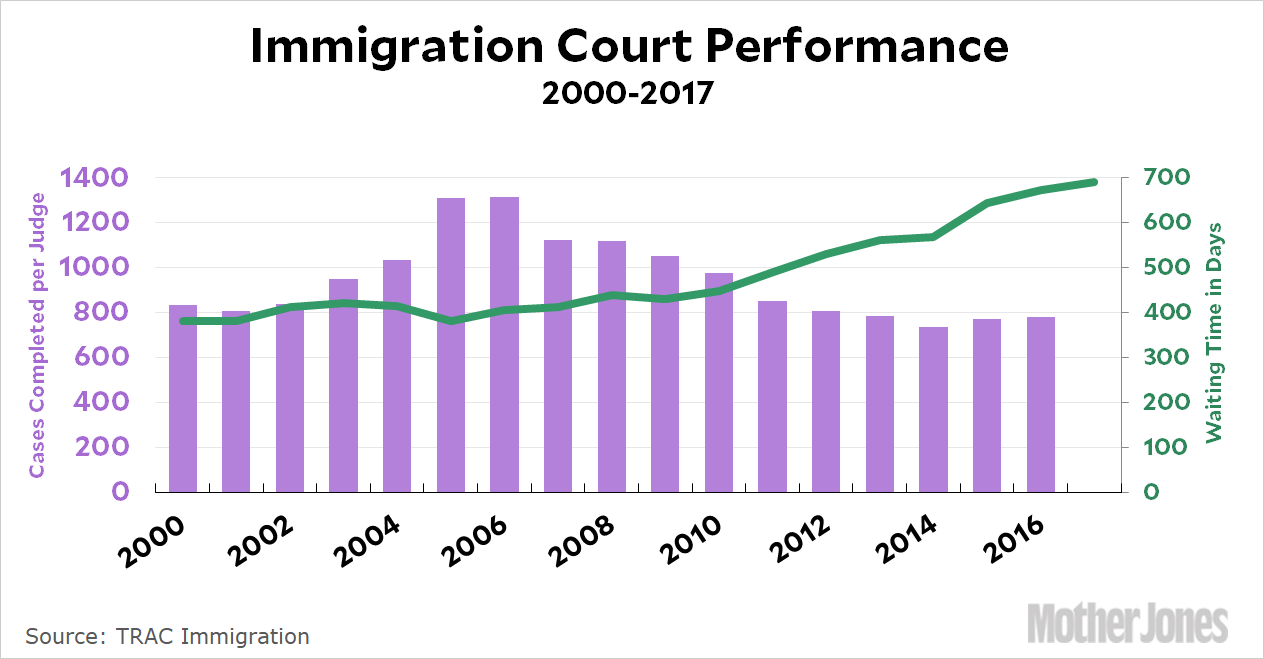Trump administration, seeking to speed deportations, will impose quotas on federal immigration judges
A new quota system will be tied to the judges’ annual performance reviews, according to Justice Department memos, and judges will be expected to clear at least 700 cases a year to receive a “satisfactory” rating….A union representing the judges called the move “unprecedented,” saying it risks undermining the independence of the judicial process.
This has been coming for a while. Immigration courts have been overwhelmed for years, with backlogs skyrocketing from 200,000 cases to 700,000 cases over the past decade. Everyone agrees that we need more judges, but there’s also a question of how productive judges are. Here is one of the recommendations of a recent GAO report:
Establishing comprehensive case completion goals would help EOIR more effectively monitor its performance. In addition, systematically analyzing the cause of certain continuances, particularly operational continuances, could provide EOIR with valuable information about potential challenges the immigration courts may be experiencing or areas that may merit additional guidance and training. Updating policies and procedures to ensure the timely and accurate recording of NTAs would provide EOIR greater assurance that its case management data are accurate—including the size of its case backlog.
And here’s the average efficiency of immigration judges:

As you can see, since 2000 immigration judges have cleared a pretty steady 800 cases per year on average, with an upward spike that started in 2003 but dwindled away starting in 2007. However, the number of new cases has increased substantially over the past decade, and the time to clear each case also increased as motions for continuance rose steadily. This is why the backlog is now so enormous.
I’m not sure that judge efficiency per se is the big problem here, but in any case, a goal of 700 completed cases per year is probably not out of line. More important, probably, is getting a handle on continuance requests, which have risen from both prosecutors and defense attorneys. Today’s cases aren’t inherently more complex than they were a decade ago, so it’s not clear why wait times have gone up so dramatically.













